Routes of the Area
Bridle Roads in Langsett
A network of tracks and lanes, which crossed the area, linked the farms of the area. Many of these tracks are still in use today as public footpaths or bridleways and in some cases as minor roads. Until 1805 the main road through the village did not exist.
Packhorse Routes
Three very important ancient routes crossed the Langsett area.
The Saltway was an ancient trackway from Cheshire to Yorkshire. As its name suggests it was used to bring salt into the region. This was a most important commodity as it was the only means to preserve food. This pathway was well served with inns along its route.
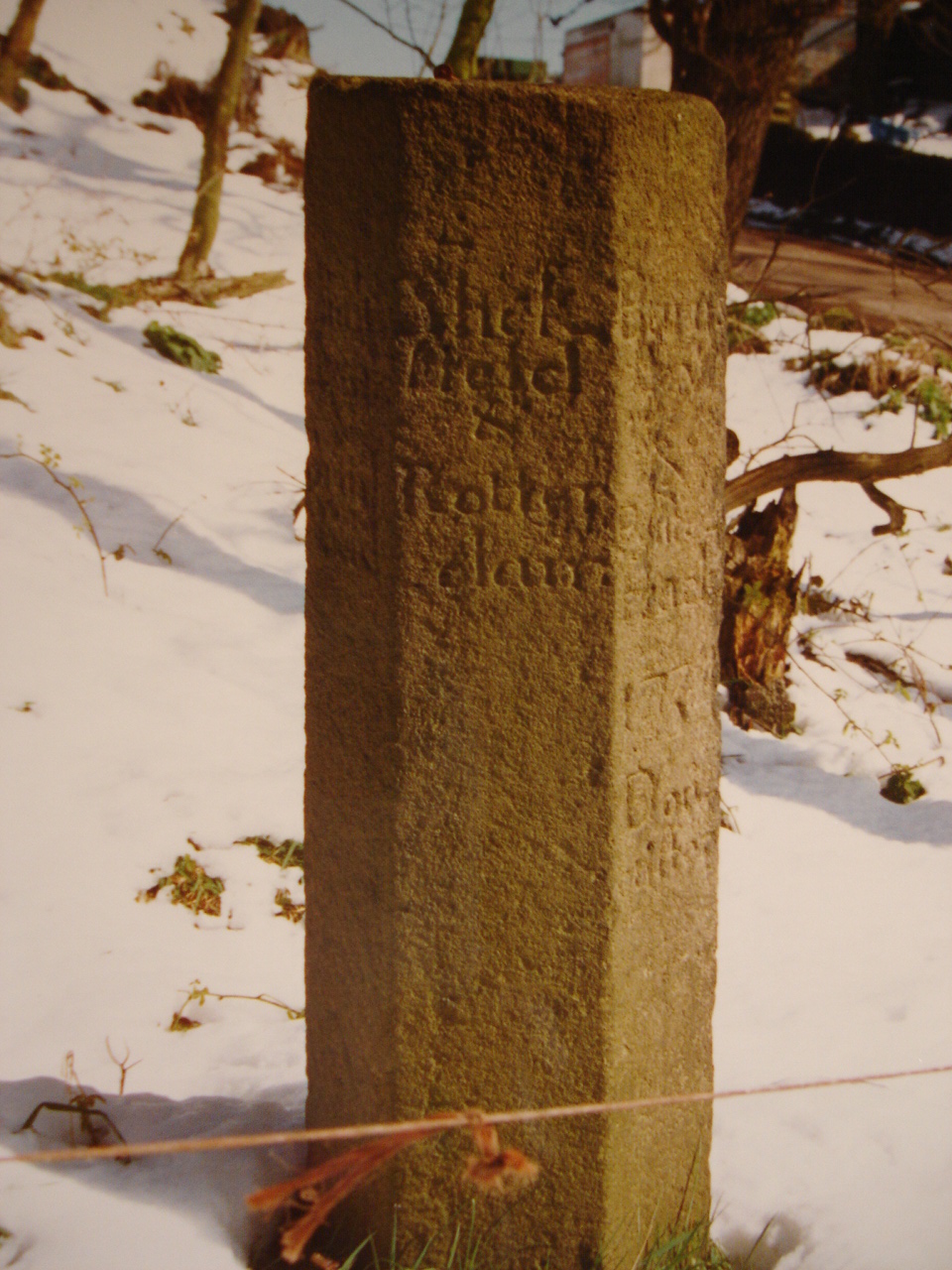
|
| 1734 Signpost on the Saltway |
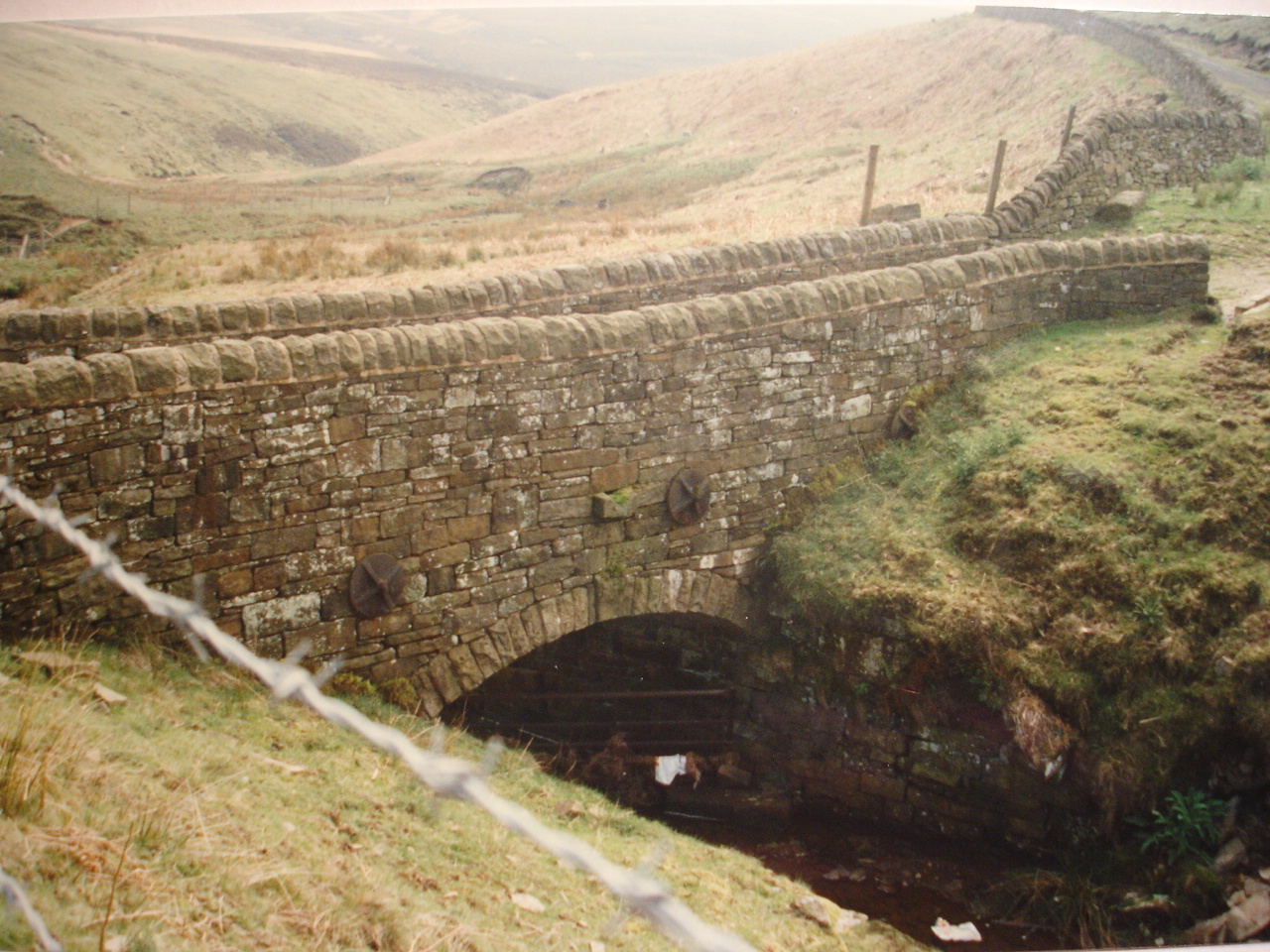
|
| Packhorse Bridge on the Saltway |
Cut Gate (sometimes referred to as Cart Gate) came across the moors from the Hope, Woodlands and Derwent valleys heading for Penistone. Mainly drovers and farmers would have used this track to get to Penistone market.
Halifax Gate ran from Derbyshire to Penistone to meet the road to Halifax. The old route can still be followed from near the crossroads at Midhopestones to Judd Field and then to
Cubley. This route would have been used by farmers and wool merchants taking wool to Halifax which was a large centre for the sale of wool.
Turnpike Roads
The principle underlying the turnpiking of a road was that Parliament authorised Trustees to set up tollgates and collect tolls from travelers. The tolls collected generally had to be used to begin improvements to the road. In 1888 road repairs came under the jurisdiction of the local authorities and so tolls from landowners were removed.
There were three turnpike roads in the area.
Saltersbrook Turnpike. The Doncaster and Saltersbrook Trust was authorised in 1740. The original route ran from Saltersbrook over the old packhorse bridge to Lady Cross, then to the summit of the Langsett Moors, down Bord Hill to Fulshaw and then up to Hartcliff. Here it divided, one route continuing to Rotherham and Sheffield. The other route turned to the left and into Penistone, then to Barnsley and onward to Doncaster.
In 1830 the road was re¬routed over the present bridge at Saltersbrook and the sharp left hand bend was put in at Fulshaw and then the road went via Millhouse Green and Thurlstone to Penistone. This was to avoid the steep climb up to Hartcliff. There was a tollgate on Bord Hill near the Dog and Partridge.
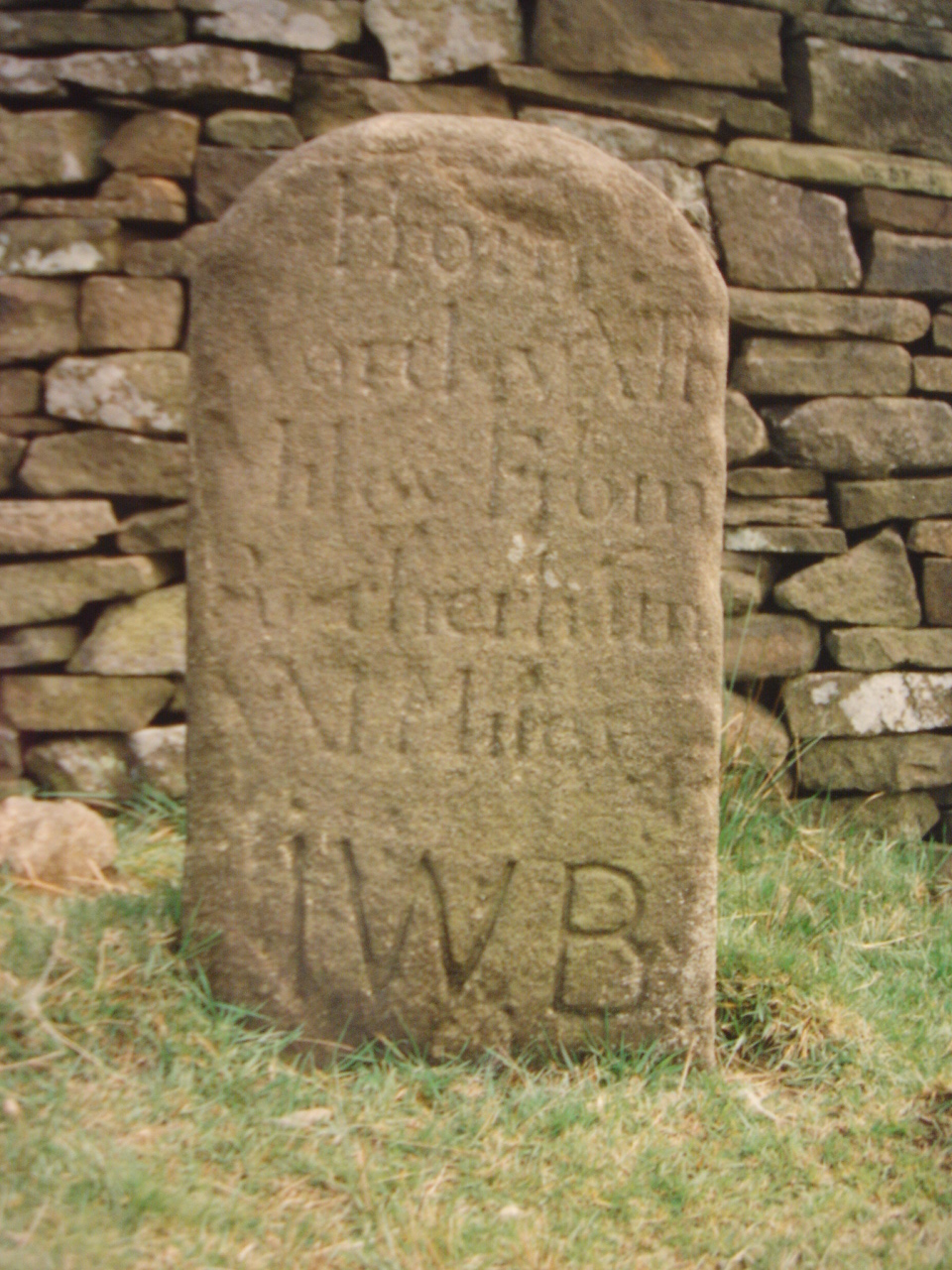
|
| Early signpost on 1740 Saltersbrook Turnpike |
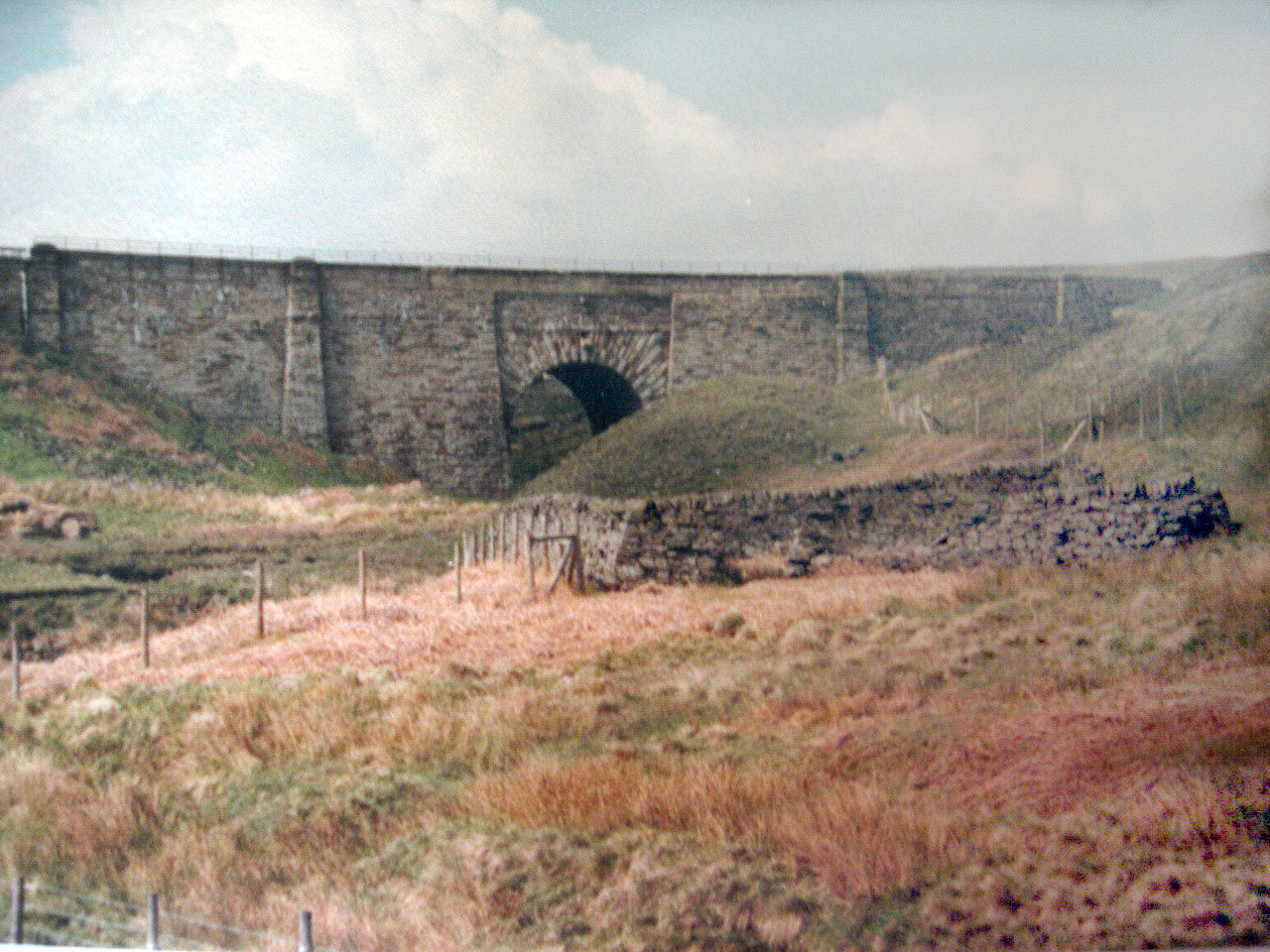
|
| Bridge on Saltersbrook (current A628) with remains of a former bridge in foreground |
The Mortimer Road turnpike was authorised in 1771 but the road was not built for another 5 to 6 years. The route ran from Grindleford to Bamford to Moscar and then followed much of the route of the Halifax Gate packhorse route. Although in some places new road had to be built as the old route was too steep for wheeled vehicles.
The new road appears to have been doomed to fail from the beginning. It did not link large centres of population so there were no coaching inns to use it and there was not enough movement of goods to make it financially viable, and so the trust had collapsed by the 19th century.
The Sheffield, Wadsley and Langsett turnpike going to Huddersfield was a much later authorisation dating from 1805. This road did not take over an existing packhorse route but was new and went from Stocksbrige through Langsett and towards Crow edge.
The Sheffield Manchester Railway
A railway line ran from Sheffield to Manchester via Penistone and Woodhead. This line had a branch line from Deepcar to the Steelworks in Stocksbridge which was extended to Langsett while the dam was being built.
The line from Manchester to Woodhead opened in 1840 and from Dunford Bridge to Sheffield in 1845. The Woodhead tunnel was completed in December 1845. This line was finally closed in 1981. Much of the old trackbed of the railway is now converted into
the Trans Pennine Trail.
The extended line to Langsett was completed in September 1898. This must have been a great relief as until the completion of the railway, carts had to bring the materials from Hazlehead station a distance of two and a half miles.
Two locomotives were ordered to work the line. The Langsett for standard gauge and the Little Don for 3 foot gauge. The line was closed on completion of the dam in 1904.
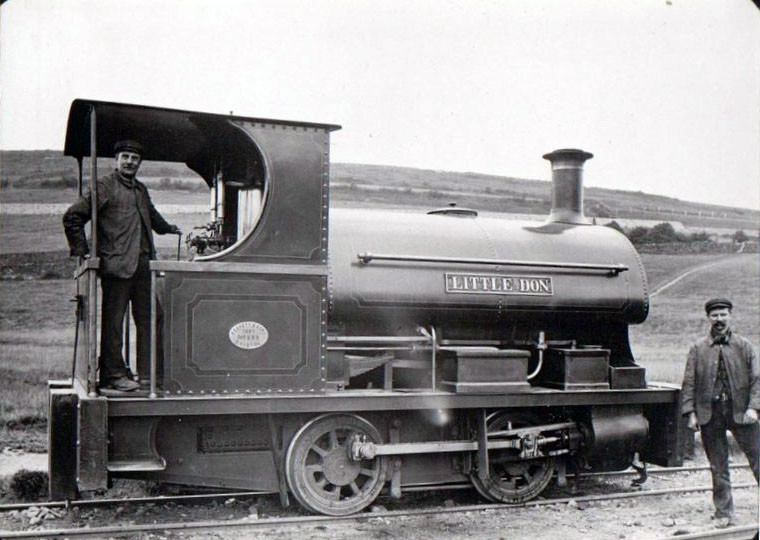
|
| Little Don on Langsett Line |